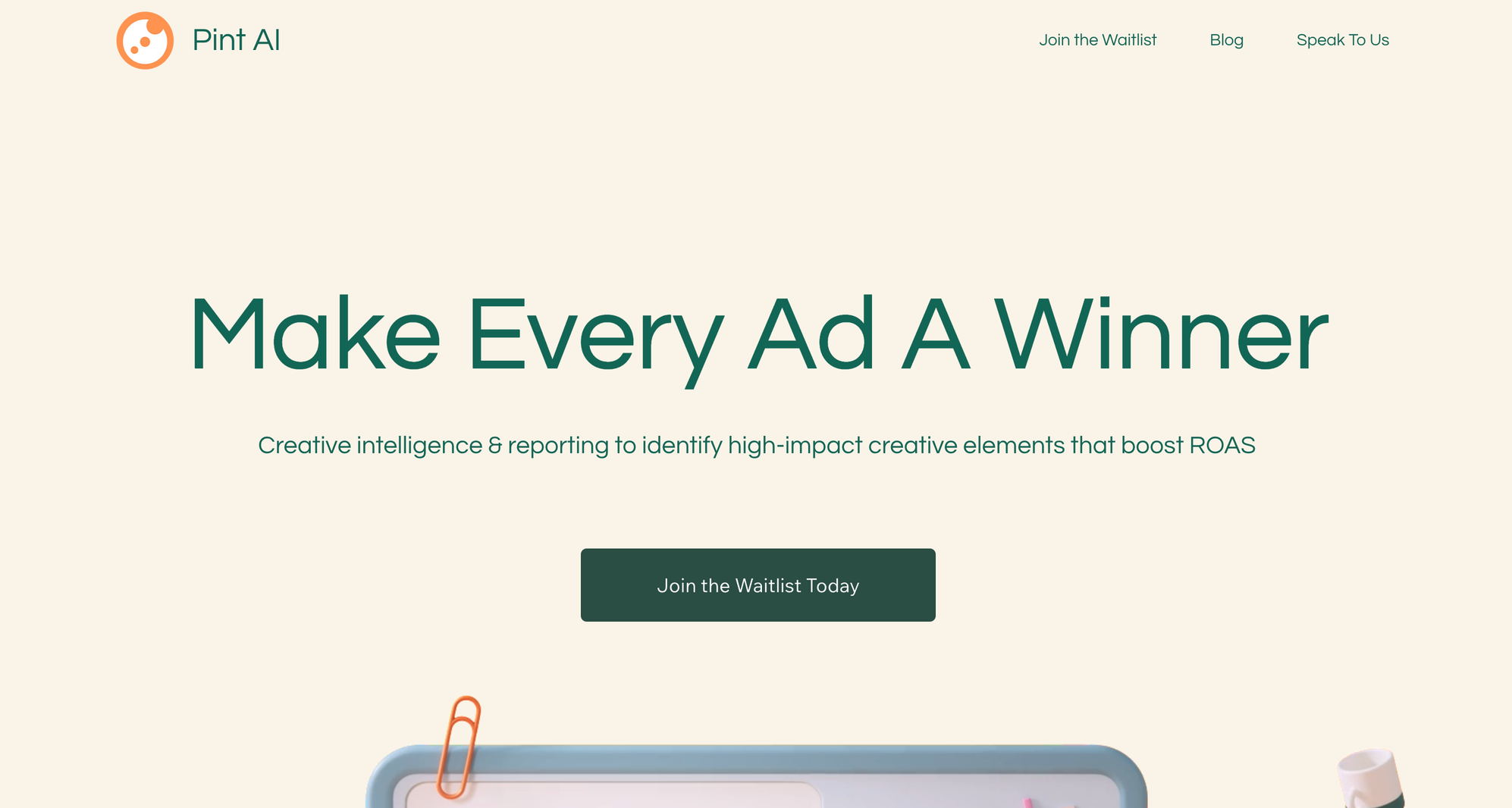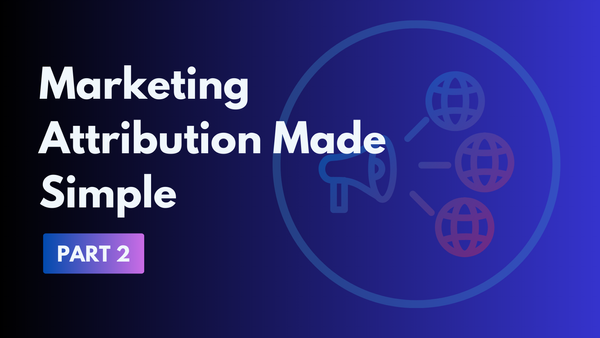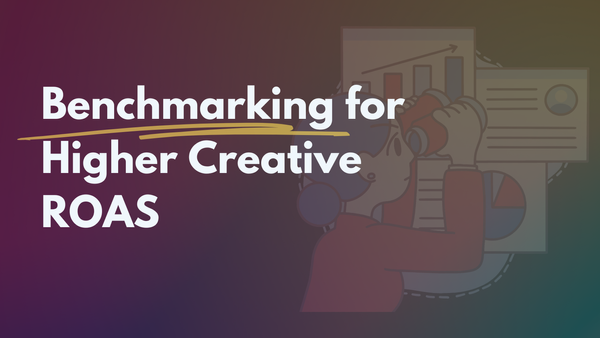How You Can Validate Your Creative Concepts for Meta Ads
Creative testing, especially for creative concepts, is one of the main functions of media buying teams. But how do you interpret and validate your creative concept?

Today, launching an ad without thorough creative testing is a must, especially on Meta. There's simply no question about it.
But how do you validate an idea or creative concept through testing? This is where an eye for data, understanding what it means and interpreting it in the right manner is of huge, huge help.
The Critical Role of Data in Ad Concept Validation for Meta
Data serves as the cornerstone in navigating the complex consumer landscapes of Meta's platforms.
Through a combination of detailed quantitative metrics and qualitative insights, advertisers can optimize their creative strategies to better match the platform's unique user behavior and preferences.
Effective data interpretation not only forecasts ad performance but also ensures content is precisely tailored, maximizing user engagement and conversion rates on these high-traffic platforms.
Gathering Comprehensive Data: Laying the Groundwork for Meta Ads
The success of Meta Ads heavily relies on gathering diverse data points:
- Quantitative Data: Metrics like click-through rates, conversion rates, and "Likes" provide a clear picture of how users interact with ads.
- Qualitative Data: User comments and reactions offer deeper insights into the emotional resonance of your ads.
Collecting this data allows media buyers to gauge an ad’s potential impact accurately and identifies areas ripe for enhancement.
Techniques for Effective Data Analysis on Meta Platforms
Transforming raw data into actionable insights for Meta Ads involves:
- Statistical Analysis: Using Meta's own Business Suite tools or third-party software to detect trends and measure the impact of different elements. In fact, specialized tools like Pint AI can help you go one step deeper—within your concepts, which are the creative elements (like logos, background colours, etc), that can increase conversions.

- A/B Testing: Meta’s robust A/B testing features allow buyers to test variations directly within the platform, helping determine the most effective version of an ad in real-time.
- Sentiment Analysis: Tools integrated with Meta, like Brandwatch, analyze user comments and reactions to gauge public sentiment, adding a qualitative layer to the numerical data.
Interpreting Data to Make Informed Decisions
Effective data interpretation is about uncovering not just which ads perform well but also understanding why they resonate. This involves:
Identifying Patterns and Outliers
Recognizing successful trends that could inform future Meta ad campaigns and spotting unexpected results that could indicate new marketing opportunities.
For example, you might notice that ads featuring your Ugly Ads have higher engagement rates, or that a specific call-to-action phrase drives more clicks. Recognizing these patterns allows you to standardize certain successful elements across future campaigns, ensuring a baseline of effectiveness.
You can identify these patterns or outliers by:
- Segmentation: Break down your audience into smaller segments to identify if certain patterns hold true across different demographics or interests.
- Trend Analysis: Use statistical tools to track trends over time, such as an increasing preference for video content over static images.
- Performance Benchmarking: Compare the performance of different ad elements against each other and against industry or historical benchmarks to identify what’s working best.
- Qualitative Feedback: You can also take a look at comments under the ad to understand whether a larger trend that you believe holds true. Alternatively, if that ad is an anomaly, analyzing comments can tell you what is being seen as different.
Applying Insights to Optimize Future Meta Campaigns
Once you've analyzed the data from your Meta ad campaigns, you're equipped with valuable insights that can significantly enhance the performance of future campaigns. Let's delve deeper into how these insights can be applied to refine both the visual and textual components of your ads, as well as optimize targeting and placement strategies within the Meta ecosystem.
Visual and Copy Adjustments
1. Refining Visual Elements:
Visual content plays a pivotal role in capturing attention on platforms like Facebook and Instagram. Use data insights to understand which images, videos, or graphics resonate most with your audience.
For instance, if carousel ads featuring lifestyle images consistently outperform standard product photos, this trend should guide the creative direction of upcoming campaigns. Consider aspects such as color schemes, image composition, and the presence of people in images, which can all impact user engagement.
2. Enhancing Ad Copy:
Copy adjustments are equally crucial. The tone, length, and call-to-action (CTA) of your ad copy can dramatically affect how audiences interact with your content. Data might show that concise, action-oriented copy drives more clicks, or that a conversational tone yields higher engagement rates compared to a formal one.
Targeting and Placement Strategies
1. Precision Targeting:
Leveraging insights into audience behavior allows for more precise targeting. Data can reveal which demographic segments are most responsive or which interests correlate with higher engagement or conversion rates. Adjust your targeting parameters to focus more on these high-performing segments.
Targeting Optimization:
- Utilize Meta’s lookalike audiences feature to reach new users who share characteristics with your best-performing audience segments.
- Refine audience segments based on engagement levels, purchase history, and other behavioral data.
2. Strategic Ad Placement:
Where your ads appear on Meta’s platforms can significantly impact their performance. Insights from past campaigns can indicate whether your ads perform better in Facebook’s news feed, Instagram stories, or perhaps within in-stream videos.
Placement Adjustments:
- Analyze placement data to identify where ads garner the most favorable engagement and conversion metrics.
- Test different placements to find the optimal mix for various types of content and campaign goals.
For media buyers aiming to capitalize on the vast audience on Meta platforms, mastering the art of data interpretation for ad concept validation is essential.
By leveraging robust data analysis and testing capabilities available within Meta’s ecosystem, advertisers can ensure their campaigns are not only creative but also grounded in data-driven strategies that maximize engagement and conversions.
Stay ahead in the digital marketing game by embedding these data interpretation strategies into your Meta advertising efforts, ensuring your campaigns achieve optimal performance from the outset.





